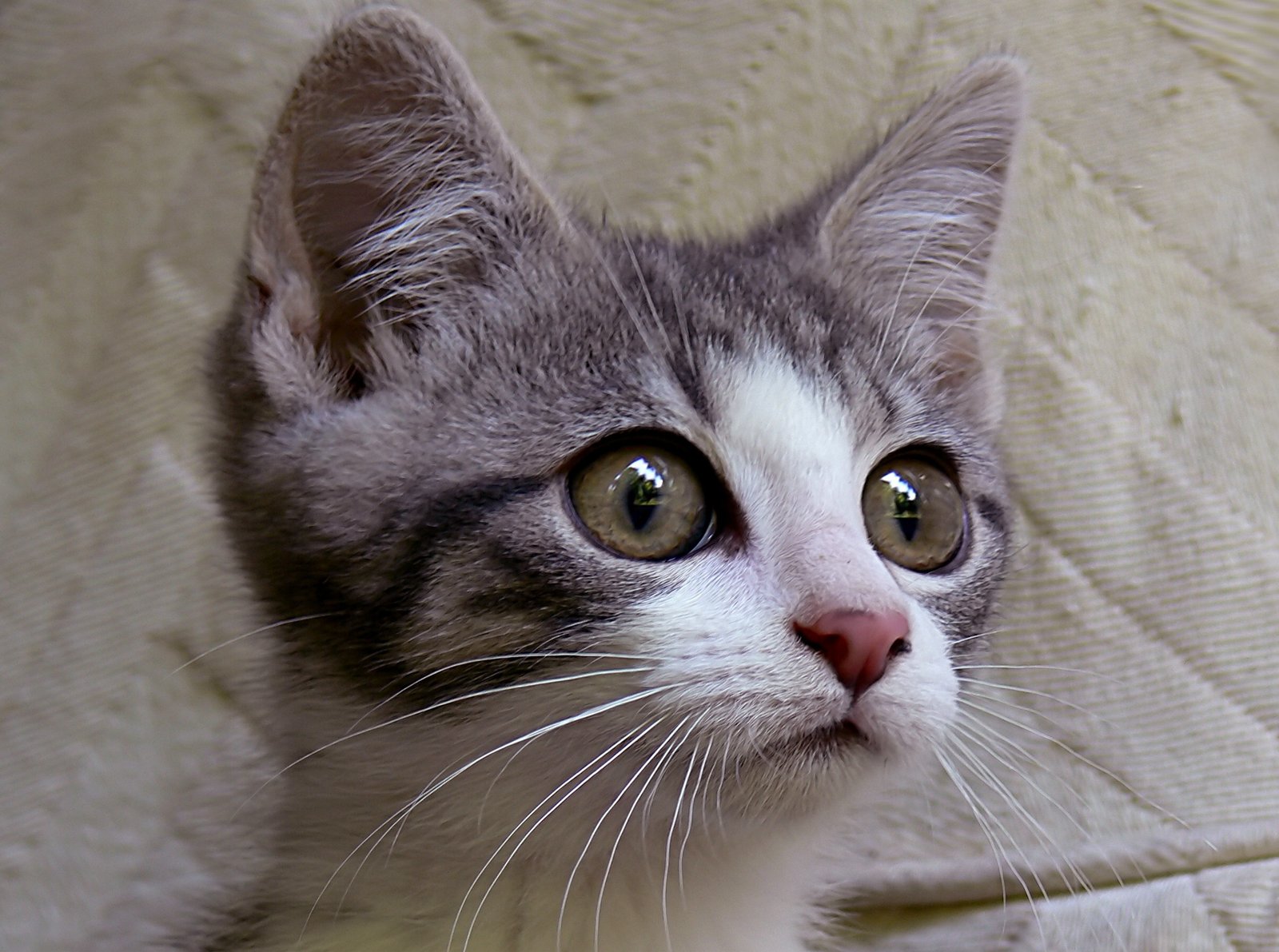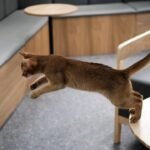Have you ever wondered what your cat is really thinking? Behind those mesmerizing eyes lies a world of emotions, especially when they’re caught between fear and loyalty. Cats, with their mysterious demeanor, often communicate in subtle ways that can be easily overlooked. But when they’re scared yet loyal, they send out emotional cues that speak volumes. These signals are a testament to their complex nature and their deep connection with us. Let’s dive into the world of feline emotions and uncover the cues that reveal their inner turmoil and unwavering loyalty.
Wide, Dilated Eyes

When a cat’s eyes turn into saucers, it’s a clear sign of heightened alertness. Wide, dilated eyes are often a reaction to fear or surprise. It’s as if they’re trying to take in every detail of their surroundings to assess potential threats. But here’s the twist: if your cat maintains eye contact with you even with those wide eyes, it indicates trust. They might be scared, but they believe in your protection. This duality of fear and trust is a poignant reminder of their loyalty. It’s like a child clinging to a parent in a crowded place; there’s fear, but there’s also an unwavering belief in safety.
Tucked Tail
A cat’s tail is a barometer of its emotions. When they tuck their tail between their legs, it’s a sign of fear or submission. However, if they do this while staying close to you, it shows loyalty. They might be feeling vulnerable, but they choose to stick by your side. This gesture is similar to a soldier standing guard despite the looming danger. The tail, often seen as a symbol of pride, is momentarily subdued, yet the bond with their human remains strong. It’s a silent plea for reassurance and comfort.
Purring with a Hint of Tremor
Purring is often associated with contentment, but it can also be a coping mechanism when cats are scared. If you notice your cat purring with a slight tremor, it might be their way of self-soothing. Yet, if they choose to sit on your lap or stay close to you while doing so, it signifies trust. They find solace in your presence, even when their world feels threatening. This is akin to humming a comforting tune in the dark, a blend of fear and faith in a better moment.
Flattened Ears
Flattened ears are a classic sign of fear or aggression. But, if your cat flattens its ears while still approaching you, it shows a mix of emotions. They’re scared, yet they seek your comfort. This behavior is like a child hiding behind their parent when faced with something intimidating. The ears might be down, signaling distress, but their choice to come closer to you speaks of an unspoken trust. It’s a delicate balance between fear and the need for reassurance.
Hiding but Peeking
Cats often hide when they’re scared, seeking a safe space away from perceived threats. However, if they hide but occasionally peek out to check on you, it indicates loyalty. They’re ensuring that their trusted human is still around, even when they’re in retreat mode. This behavior mirrors a soldier peering out from a bunker, wary of danger but reassured by the presence of comrades. The act of peeking is a testament to their bond with you, a subtle gesture of connection amidst fear.
Slow Blinking
The slow blink is a sign of trust and affection in cats. Even when they’re scared, if they offer you a slow blink, it means they’re trying to communicate their loyalty. It’s their way of saying, “I trust you, even if I’m unsure of my surroundings.” This gesture is akin to a reassuring nod amidst chaos, a small but significant affirmation of their bond with you. The slow blink amidst fear is a powerful reminder of the depth of their emotions.
Clingy Behavior
When cats are scared, they might become unusually clingy. If your feline friend insists on being close to you during a thunderstorm or when guests are over, it’s a sign of loyalty. They see you as their safe haven, their protector. This behavior is similar to a child seeking comfort in a parent’s arms during a scary movie. It’s an emotional cue that speaks volumes about their trust in you, even when their world feels unsettling.
Vocalizing More Than Usual
Increased vocalization can be a sign of distress in cats. If your cat meows more when they’re scared but does so while approaching you, it’s a plea for reassurance. They’re communicating their fears and seeking comfort in your presence. This behavior is like calling out for a friend in a crowded place, a blend of anxiety and the hope of finding solace. The vocalization, though a sign of fear, is also an expression of their dependence on you.
Gentle Head Butts
Head butting, or bunting, is a sign of affection in cats. If your cat offers gentle head butts even when they’re scared, it’s a heartwarming gesture of loyalty. They’re marking you as their own, their safe space amidst chaos. This behavior is akin to a comforting pat on the back, a subtle yet powerful expression of trust. The head butt, even in fear, is a testament to their deep-seated bond with you.
Staying Close but Watching the Door
If your cat stays close to you but frequently glances at the door, it’s a sign of vigilance. They’re scared and on high alert, yet they choose to remain near you. It’s their way of balancing fear with loyalty, ensuring they’re ready to act if needed. This behavior mirrors a sentinel standing guard, eyes scanning for threats but always rooted in their duty. The act of staying close, even amidst fear, is a profound expression of their trust in you.
In the intricate dance of feline emotions, fear and loyalty often intertwine, creating a tapestry of behaviors that reveal their innermost feelings. Each cue is a window into their world, a glimpse of their complex nature. As cat enthusiasts, understanding these signals deepens our bond with our feline companions, reminding us of the silent yet profound language of love they share with us. So, the next time your cat sends one of these emotional cues, remember the depth of their loyalty and the trust they place in you. Isn’t it fascinating how much they can communicate without uttering a single word?

Suhail Ahmed is a passionate digital professional and nature enthusiast with over 8 years of experience in content strategy, SEO, web development, and digital operations. Alongside his freelance journey, Suhail actively contributes to nature and wildlife platforms like Feline Fam, where he channels his curiosity for the Feline into engaging, educational storytelling.
With a strong background in managing digital ecosystems — from ecommerce stores and WordPress websites to social media and automation — Suhail merges technical precision with creative insight. His content reflects a rare balance: SEO-friendly yet deeply human, data-informed yet emotionally resonant.
Driven by a love for discovery and storytelling, Suhail believes in using digital platforms to amplify causes that matter — especially those protecting Earth’s biodiversity and inspiring sustainable living. Whether he’s managing online projects or crafting wildlife content, his goal remains the same: to inform, inspire, and leave a positive digital footprint.






